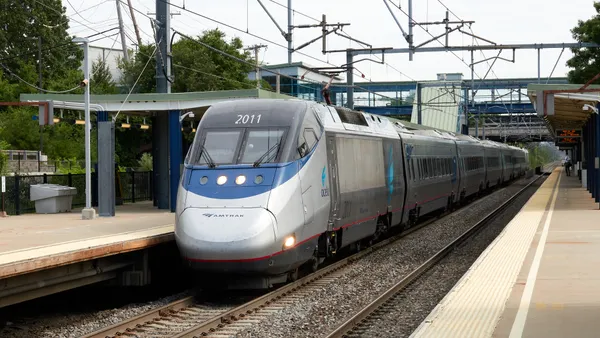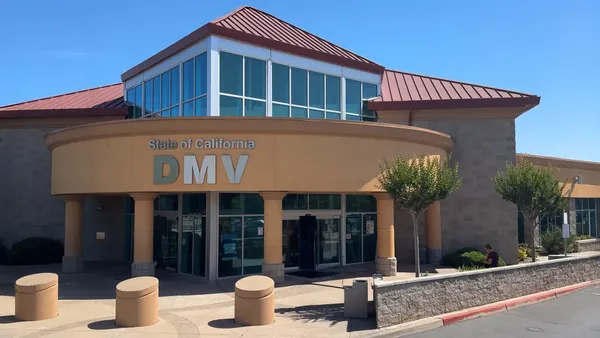According to the American Public Transportation Association, 96% of the 190 transit agencies it surveyed in 2022 have workforce shortages, with 84% of them saying the shortfalls affect their ability to operate. Driving the shortfall are factors including an aging workforce, a competitive job market and increased service demands as transit agencies recover from pandemic-era disruptions.
“We knew this was happening before the pandemic, I think the pandemic just sped everything up,” said Carita Ducre, APTA’s vice president of workforce development and educational services.
Nationwide transit staffing challenges are likely to continue into the future, Ducre said. With the gig economy, U.S. residents have more opportunities for flexible work arrangements, which public transit careers don’t typically offer. Meanwhile, younger workers are more likely to move from job to job than older ones.
“We’ve got to let go of our expectation of longevity that we used to have, and just be in that mindset of constant recruiting and constant hiring,” Ducre said.
The Utah Transit Authority has adjusted its hiring process and seen promising results that may offer lessons for other agencies. UTA serves the Ogden, Park City, Provo, Salt Lake City and Tooele metro areas and had an average weekday ridership of about 132,000 people in October. During the pandemic, the agency was losing 80% of its hires for driver roles due in part to the long gap between hiring and start dates, which UTA Chief People Officer Kim Shanklin said could be up to four weeks. In that time, many applicants would get offers from other employers and start working those jobs instead.
In August 2021, the agency revamped its onboarding program for new hires, allowing them to do site visits, get familiar with their routes and work toward getting their commercial driver’s license before their formal training began, cutting the hire-to-start date gap to one or two weeks, Shanklin said.
UTA also updated its start date policy to allow new hires to start onboarding any Monday, rather than only Mondays of weeks in which bus operator training was in session. Onboarding is designed as a two-week program, but the added flexibility means some people can complete it faster, she said. New employees are paid during this period.
These simple changes have helped turn around UTA’s hiring woes. Now, the vast majority of people who accept the job actually join the agency, Shanklin said.
“We saw if we offered [10] people the job … that nine are showing up now,” Shanklin said. “Maybe we were losing one person, and it could have been to go to another job, or maybe they didn't pass the background check. So we saw our … ‘show-up-for-work rate’ increase.”
The program isn’t a silver bullet solution for transit staffing, however. Shanklin said turnover is still generally high in the first two years, when the agency’s newer bus drivers effectively serve as a fill-in workforce for more experienced operators, making their work hours and conditions less predictable. The agency is working on creating more stability where it can, she said, though it’s been harder in the areas around Ogden and Salt Lake City due to service expansion and employer competition.
UTA also gave raises and signing bonuses to new hires this year, echoing the cash hiring incentives offered in Washington, D.C., Chicago, St. Louis and other cities.
Boosting recruitment and streamlining the hiring process
Outreach and recruitment are among the six priorities of the Federal Transit Administration’s 2023-2028 strategic plan for national transit workforce development. The Transit Workforce Center, a federal initiative that launched in 2021 to advise local transit agencies on workforce development, co-wrote the plan. David Stephen, TWC’s communications manager, said successful recruitment campaigns emphasize the career opportunities, stability and community impact that come with public transportation jobs.
“There are people that enjoy interacting with the public, that enjoy contributing to their community and connecting their community,” Stephen said. “Those are the people that you want to reach out to, and those are the messages that you want to have [on] what makes public transit stand apart.”
To boost recruitment in Utah, Shanklin said the agency redesigned its careers website and ran social media campaigns. It also streamlined the hiring process. UTA still does the same number of interviews for job candidates, for example, but it now schedules them at regular intervals and lets supervisors know how many they are expected to do, she said.
“These were things that might not have been needed in the past because the demand wasn't so high” for transit workers, Shanklin said.
Transit agencies and national groups alike are also trying to change public perception of what it means to work in transportation and anticipate the skills those roles will need in the future. For example, with low- and no-emission vehicles becoming more commonplace, mechanics are no longer simply “rotating tires or doing oil changes,” Ducre said — they’re troubleshooting the software that powers battery electric vehicles.
The same logic applies to the advent of autonomous vehicles. In the future, bus drivers might not actually drive the bus, but instead manage passengers and ensure safety onboard, “almost like a concierge role,” Ducre said. For those roles, then, the “emphasis on having good listening skills and good language ability is going to become more important, rather than actually driving.”
In the meantime, though, transit agencies are experimenting with strategies to improve their recruitment, hiring, onboarding and longer-term retention. Notably, Stephen and Ducre said there’s no one-size-fits-all solution for transit staffing shortages. They expect that localities should begin to understand what works, and what doesn’t, in their communities within the next couple of years.
“It’s a job that goes maybe unnoticed by people,” Shanklin said, so transit agencies are trying “to highlight what a great career opportunity it could be.”










